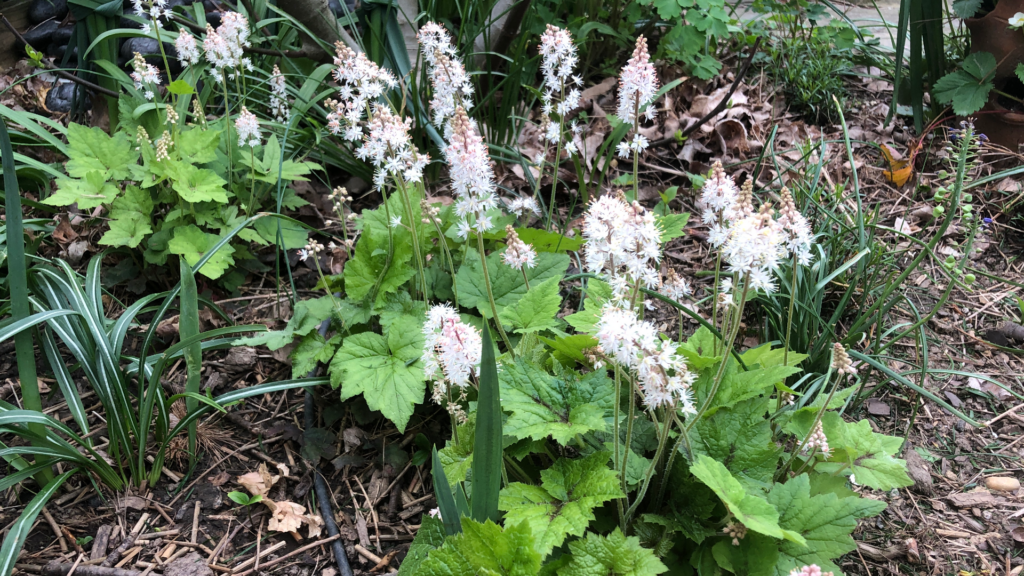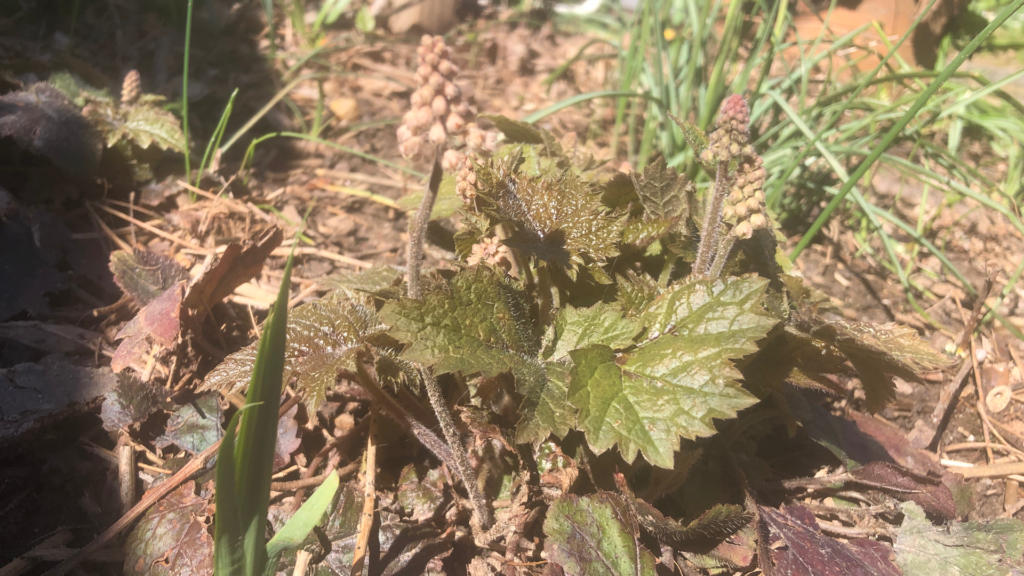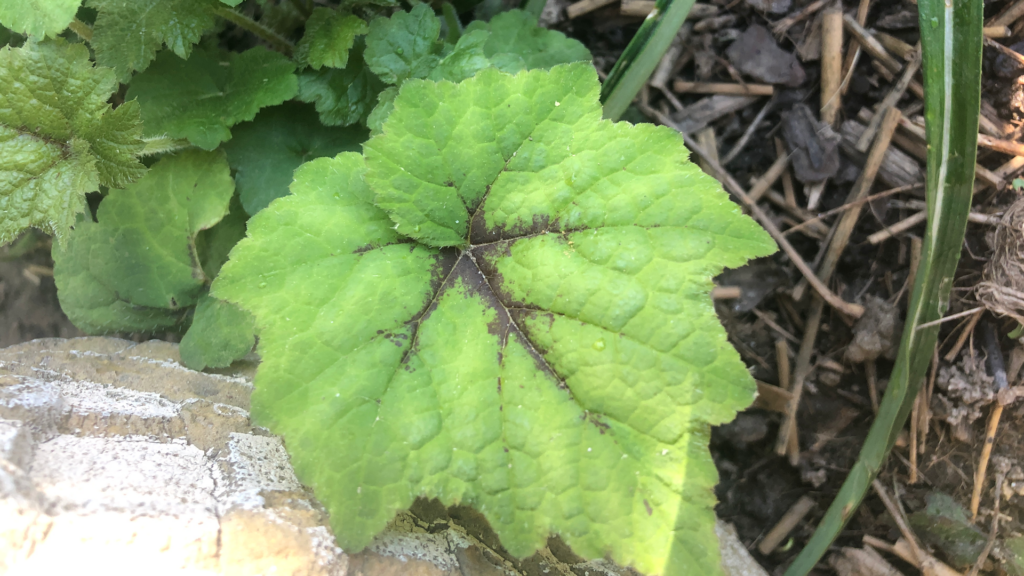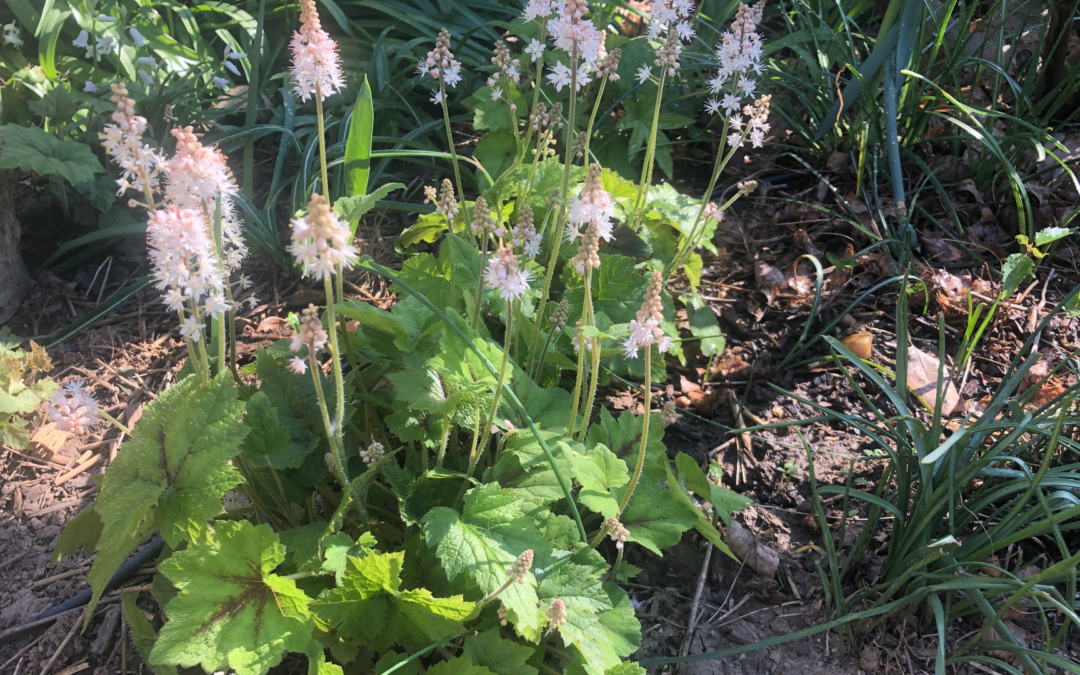Common name: Foamflower
Botanical name (genus and species): Tiarella cordifolia
Plant family: Saxifragaceae
Plant Description
- Plant size: Up to 12 inches
- Plant life cycle: Perennial
- Foliage color: Green and burgundy (bronzes in fall)
- Plant type: Evergreen
- Bloom color: White, cream
- Bloom time: Late spring to early summer
- Seasonal interest: Spring, Winter
- Preferred sunlight: Part to full shade
- Soil type: Moist, well-drained
- Watering needs: Moderate
Tiarella cordifolia, commonly known as Foamflower, is a delicate perennial native to Maryland. Foamflower has lobed leaves and airy spires of tiny flowers. This woodland gem thrives the dappled sunlight. Foamflower blooms in late spring to early summer sending up multiple stems with clusters of white and cream colored flowers.
Foamflower is one of the rare perennials that are semi-evergreen. Normally, its leaves are green with burgundy patterning during the growing season. However, during winter, the foliage takes on a more bronze color, and persists throughout the cold months. This perennial grows up to 12 inches in height and has a tendency to form dense rosette clumps.

Common Problems
Foamflower is generally resilient, but it can face issues such as powdery mildew in humid conditions. Adequate spacing and good air circulation can prevent this. Additionally, new plants may benefit from protection from rabbits and other small rodents. Erect a physical barrier if there are signs of grazing. Once plants are mature, there is not need to protect them from rabbits.
Care and Maintenance
To ensure the optimal growth of Foamflower, provide it with well-draining soil and consistent moisture. Mulching around the base helps retain moisture and control weeds. Regular deadheading after blooming can encourage more blossoms and a neat appearance. Do not remove foliage in the fall. Allow leaves to persist through the winter and remove dried and dead foliage in early spring.

Garden Uses
Foamflower adds a graceful touch to woodland and naturalized gardens. It is superb when planted beneath native understory trees or in shade gardens. Plant this semi-evergreen perennial where it can be enjoyed in the otherwise bleak winter month. Foamflower is also a charming cut flower, bringing a touch of the wild indoors.
Ecosystem Services
- Pollinator Habitat
- Wildlife Food Source
- Wildlife Shelter
- Erosion Prevention
Tiarella provides many crucial ecosystem services. Gardeners can expect a variety of pollinators to visit the blossoms of Foamflower, including bees and butterflies. Beyond attracting pollinators, Tiarella’s dense, semi-evergreen foliage provide shelter and refuge for small animals. Furthermore, this native perennial provides erosion control in otherwise shady areas that are susceptible to soil being washed away in heavy storms.
Planting Suggestions
Enhance the beauty of Foamflower by planting it alongside other shade-loving natives like Wild Geranium (Geranium maculatum), Columbine (Aquilegia canadensis), and Virginia Bluebells (Mertensia virginica). These plants create a harmonious woodland garden, enhancing the overall visual appeal.

Sources and References
- Maryland Native Plant Society
- University of Maryland Extension
- Lady Bird Johnson Wildflower Center

